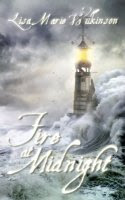Michelle Styles joins us today to speak about her latest book, AN IMPULSIVE DEBUTANTE. This book is the sequel to her Victorian Christmas novel, A CHRISTMAS WEDDING WAGER. AN IMPULSIVE DEBUTANTE is officially published in the UK on 5 September.

My daughter was absolutely taken with Lottie and demanded to know what happened to her. She thought Lottie deserved to have a happy ending. And I thought well maybe…Lottie since has become one of my favourite heroines.
Why?
Among other things, she gave me the opportunity to explore one of my favourite fairy tales--King Thrushbeard. In case you don’t know it, it is where a spoilt and proud princess is married off to a wandering minstrel because her father has become tired of her high handed ways. The scenario suited Lottie’s personality and I loved seeing her find her inner core of steel.
In the end, it was all about looking at life from Lottie's point of view and understanding the reasons behind her behavior.
Where is the book set?
The book is mainly set in the Tyne Valley during the early Victorian period. It starts in the village where I live, Haydon Bridge. The churchyard at Haydon Old Church is wonderfully atmospheric. The church was abandon when the village moved down to be near the turnpike in the late 18th century. Then in the late 19th century, they finally realized what they had and saved the remains. A much smaller church now exists and they occasionally have evensong there. There is no electricity or heating, but it is magical full of candlelight.
Did you choose the title?
No, apparently it took my editors a very long time to choose the title. The working title was The Taming of the Debutante. The big sticking point was the word "impulsive." The title works for the story and debutantes appear to be popular with readers.
I also had nothing to do with the cover or the Regency blaze. Such things are marketing decisions.
Do you have an excerpt?
You can find the excerpt here.
Is it only available in the UK?
At the moment, all I know is when it will be published in the UK. There are plans for it to be published elsewhere, but I do not know the publishing schedule. However The Book Depository has free worldwide shipping and does stock the book. You can also get through Amazon.ca or the Mills and Boon website.
What's next for you?
Currently I am writing another early Victorian. My editors are supposed to get their thoughts back to me about the third Viking--Ivar's story sometime in the next week.
My next North American release is VIKING WARRIOR, UNWILLING WIFE in December.
***
Michelle is offering a copy of AN IMPULSIVE DEBUTANTE to someone randomly drawn from the comments. To get the conversation rolling, Michelle would like to know: what is your favourite folk or fairy tale and why?

Carlotta Charlton can't wait for her first season--until her impulsive behaviour lands her right in the lap of notorious rake Tristan, Lord Thorngrafton!Michelle, why did you write about Lottie Charlton? After all, she was not the most sympathetic character in A CHRISTMAS WEDDING WAGER.
Tristan is cynically convinced that she's a fortune-hunter. But he can't keep away from her. Several heated kisses lead to scandal and, one outraged mama later, they're on their way to Gretna Green.
Catching his breath on the carriage ride to the border, Tristan decides it's time that Lottie learns her lesson. If she wants to play with fire, he'll notch up his seduction and set her ablaze!
My daughter was absolutely taken with Lottie and demanded to know what happened to her. She thought Lottie deserved to have a happy ending. And I thought well maybe…Lottie since has become one of my favourite heroines.
Why?
Among other things, she gave me the opportunity to explore one of my favourite fairy tales--King Thrushbeard. In case you don’t know it, it is where a spoilt and proud princess is married off to a wandering minstrel because her father has become tired of her high handed ways. The scenario suited Lottie’s personality and I loved seeing her find her inner core of steel.
In the end, it was all about looking at life from Lottie's point of view and understanding the reasons behind her behavior.
Where is the book set?
The book is mainly set in the Tyne Valley during the early Victorian period. It starts in the village where I live, Haydon Bridge. The churchyard at Haydon Old Church is wonderfully atmospheric. The church was abandon when the village moved down to be near the turnpike in the late 18th century. Then in the late 19th century, they finally realized what they had and saved the remains. A much smaller church now exists and they occasionally have evensong there. There is no electricity or heating, but it is magical full of candlelight.
Did you choose the title?
No, apparently it took my editors a very long time to choose the title. The working title was The Taming of the Debutante. The big sticking point was the word "impulsive." The title works for the story and debutantes appear to be popular with readers.
I also had nothing to do with the cover or the Regency blaze. Such things are marketing decisions.
Do you have an excerpt?
You can find the excerpt here.
Is it only available in the UK?
At the moment, all I know is when it will be published in the UK. There are plans for it to be published elsewhere, but I do not know the publishing schedule. However The Book Depository has free worldwide shipping and does stock the book. You can also get through Amazon.ca or the Mills and Boon website.
What's next for you?
Currently I am writing another early Victorian. My editors are supposed to get their thoughts back to me about the third Viking--Ivar's story sometime in the next week.
My next North American release is VIKING WARRIOR, UNWILLING WIFE in December.
***
Michelle is offering a copy of AN IMPULSIVE DEBUTANTE to someone randomly drawn from the comments. To get the conversation rolling, Michelle would like to know: what is your favourite folk or fairy tale and why?



 It took Dreyse twelve years to perfect his design. It did have its early flaws. Its range was short compared to muzzled loaders. Gas escaped at the breech when the rifle was fired with a paper cartridge often causing the breech to close completely. Soldiers suffered burns as a result causing inaccurate aiming capability. The needle, or firing pin, also had a tendency to become encased in gunpowder causing it to break after 200 rounds. Soldiers had to carry two replacement pins with them as a result. An improved model with greater muzzle velocity and increased loading speed was introduced later, and in 1836 Dreyse made a move that would change warfare.
It took Dreyse twelve years to perfect his design. It did have its early flaws. Its range was short compared to muzzled loaders. Gas escaped at the breech when the rifle was fired with a paper cartridge often causing the breech to close completely. Soldiers suffered burns as a result causing inaccurate aiming capability. The needle, or firing pin, also had a tendency to become encased in gunpowder causing it to break after 200 rounds. Soldiers had to carry two replacement pins with them as a result. An improved model with greater muzzle velocity and increased loading speed was introduced later, and in 1836 Dreyse made a move that would change warfare.

























